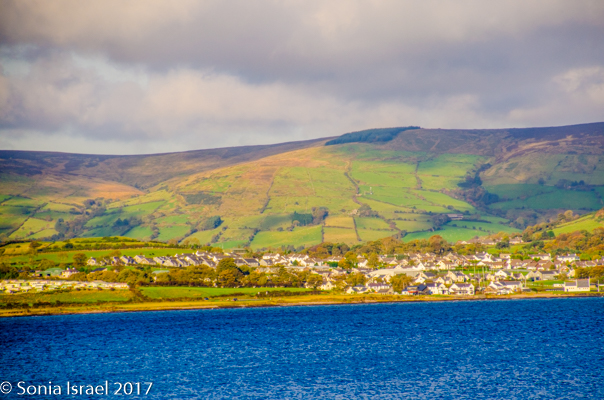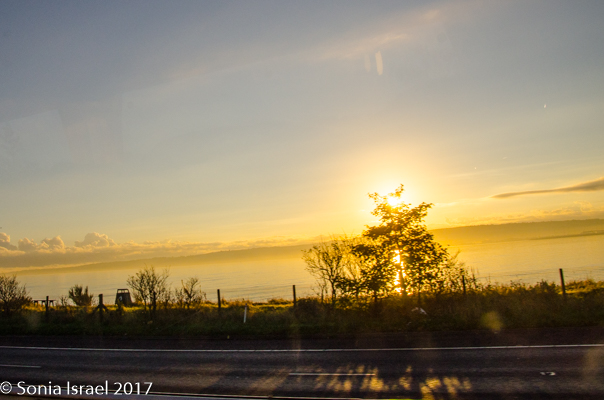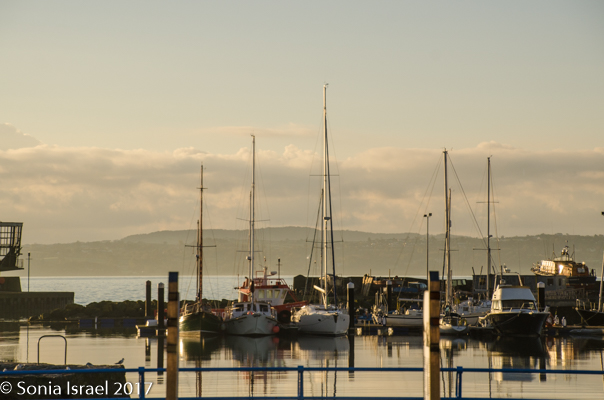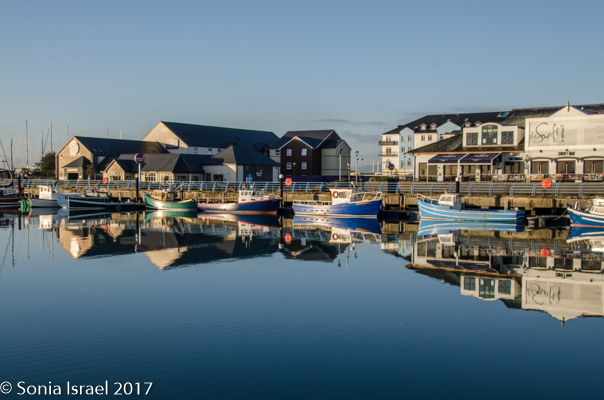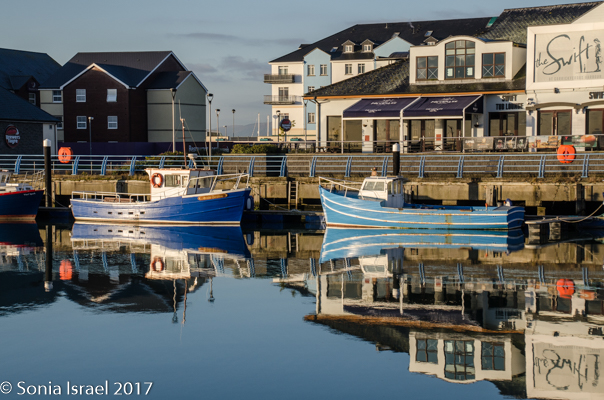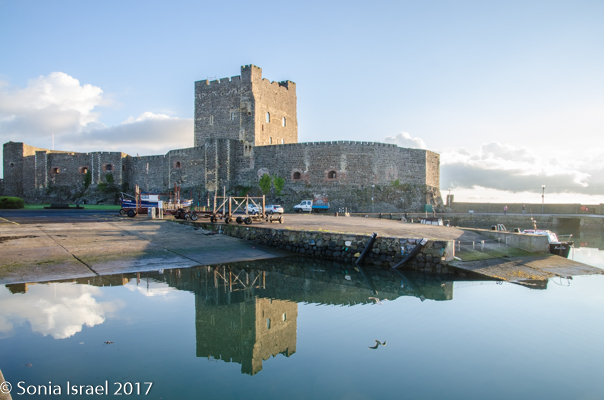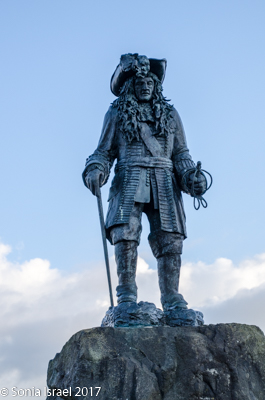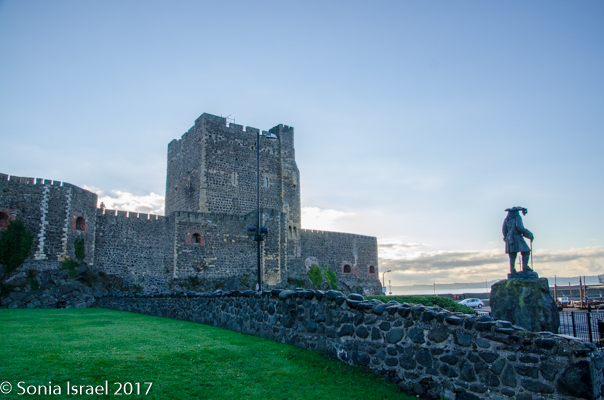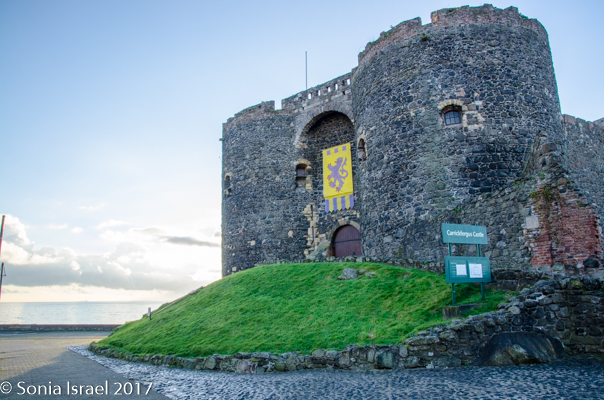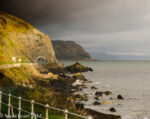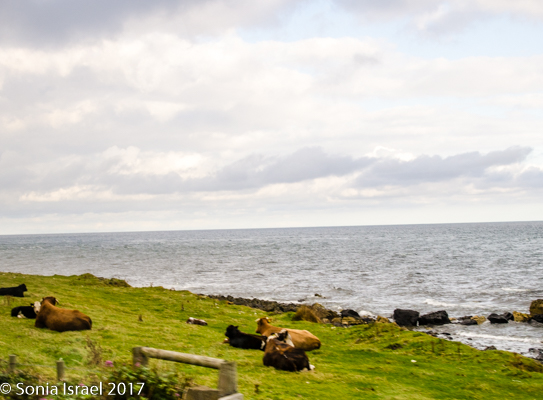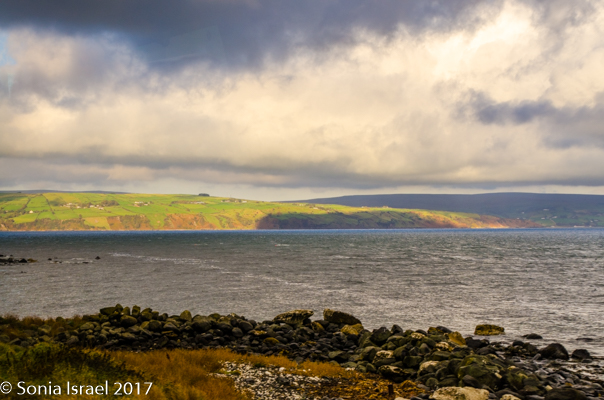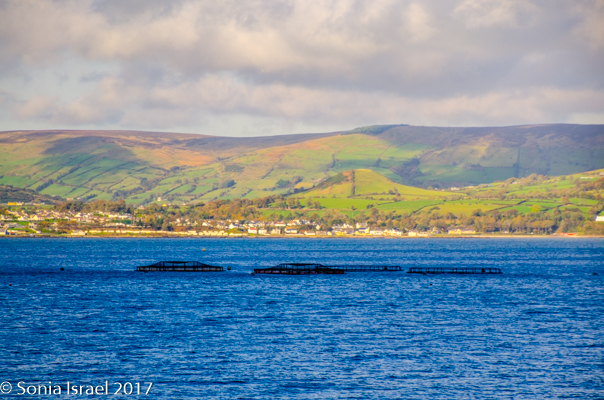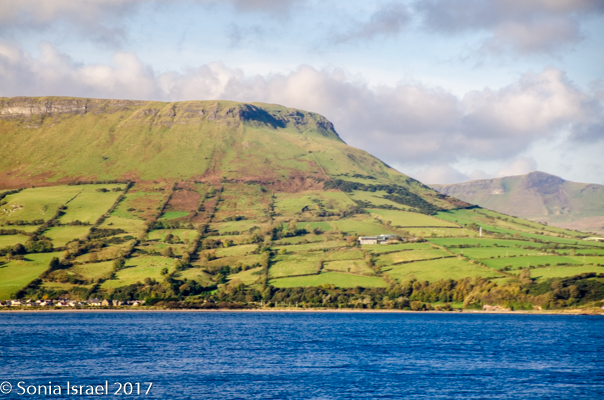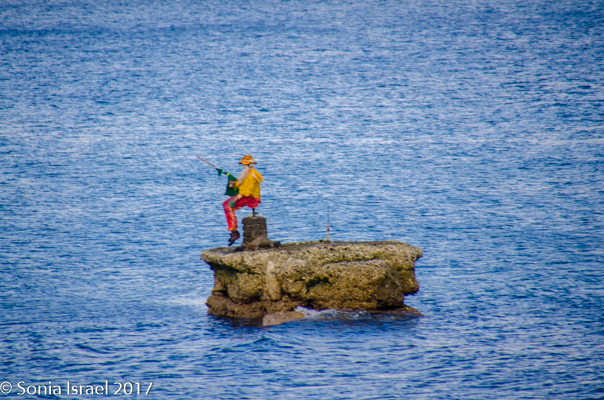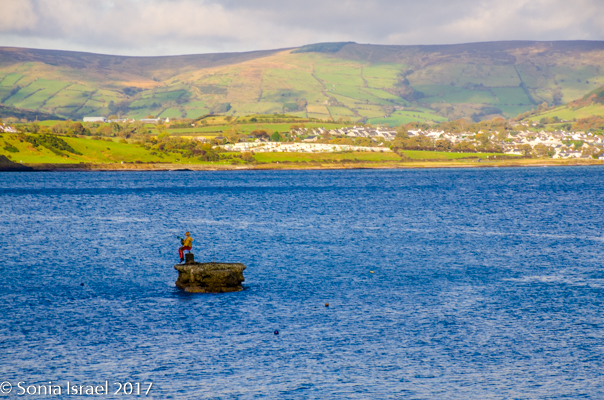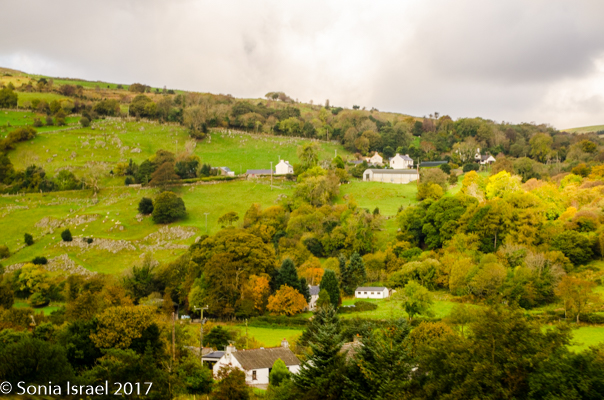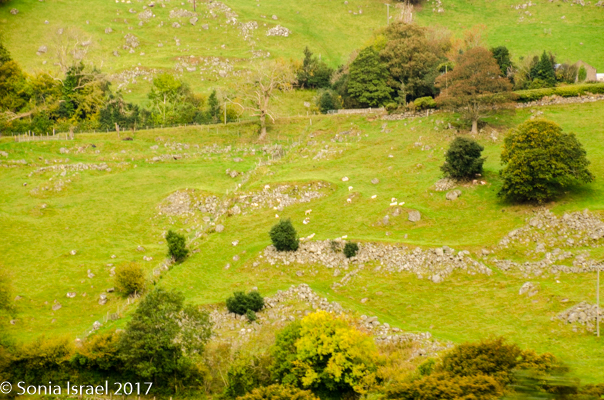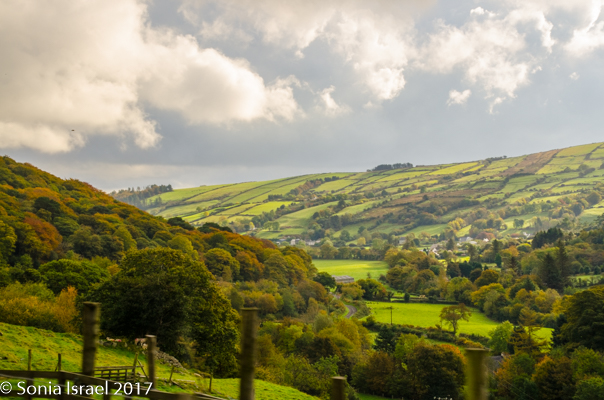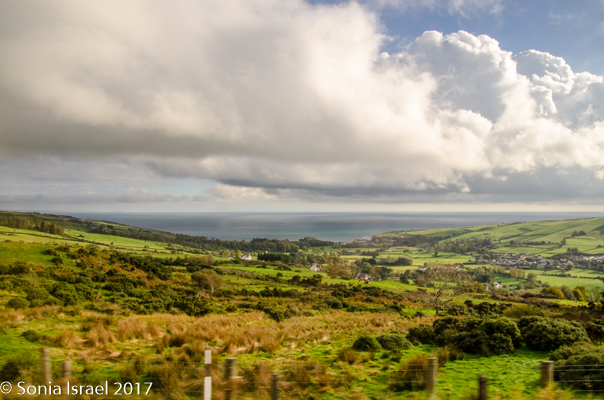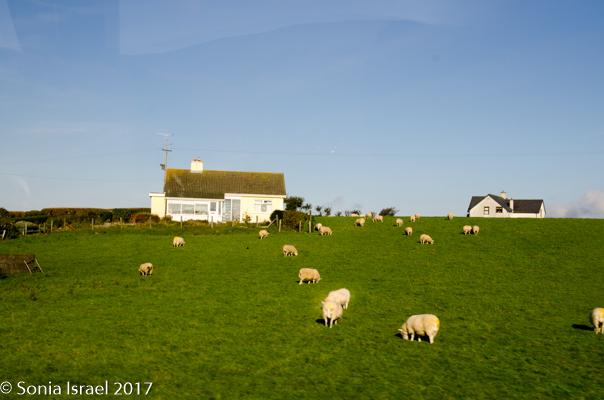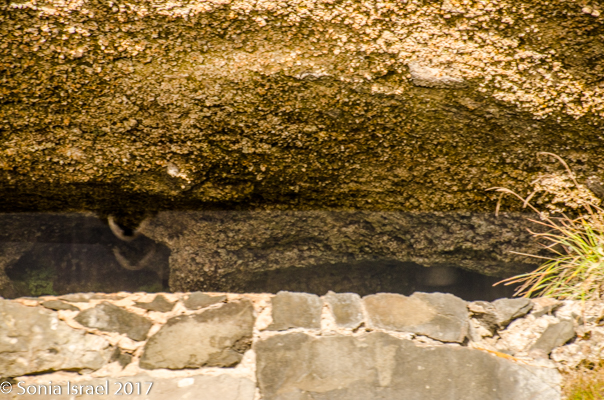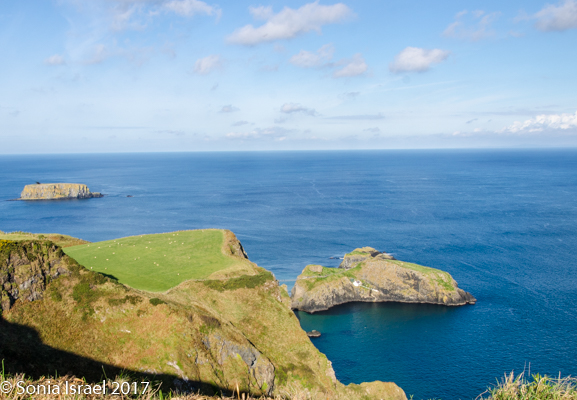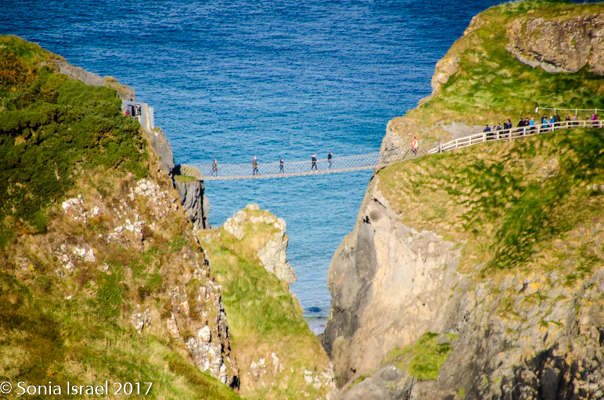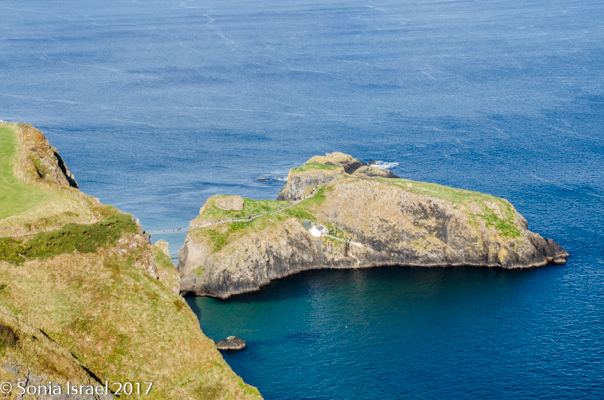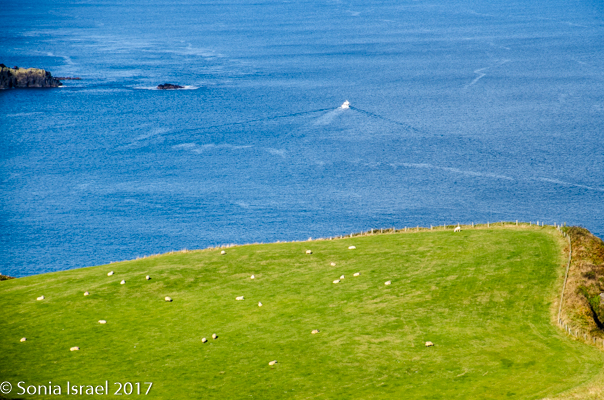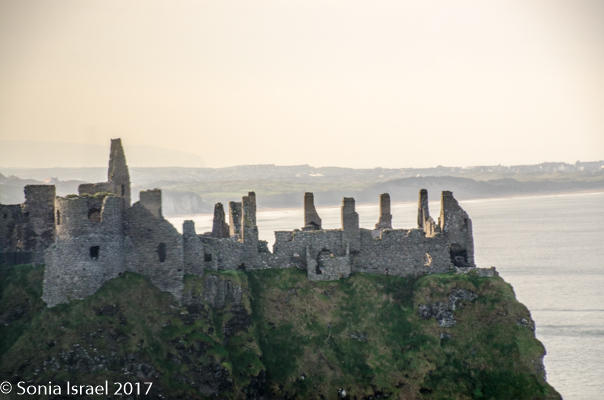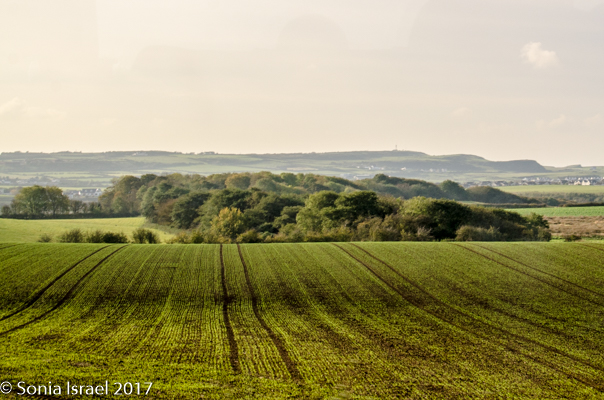Day 7, Tuesday Oct 25, 2016
Carrickfergus on the Belfast Lough
We drove out of Belfast early in the morning and got to see the sun rising and turning the sky a brilliant orange (not the best color in Northern Ireland, as you will see below, but this one is Nature’s doing).
The countryside continued to be gorgeous. We drove past lots of farms. Rolling green, green hills. White dots of sheep. Trees burning with color. And the bluest water ever. We drove through villages, past war memorials, horses and even longhorn cattle. We drove past white houses against the green fields.
Our first stop was not on our original itinerary. It was the Carrickfergus Castle, a Norman castle siituated in the town of Carrickfergus on the northern shore of Belfast Lough (pronounced loch meaning lake). Besieged in turn by the Scotish, Irish, English and French, the castle played an important military role until 1928 and remains one of the best preserved medieval structures in Northern Ireland. It was strategically useful because 3/4 of the castle is surrounded by water. But none of this was the reason we stopped. We stopped here because the mother of one of the women on the trip grew up right across the street, and since it wasn’t really out of our way, Colm agreed to stop there. The water around the castle was like a mirror with the boats reflected in it. That was actually the most beautiful part of the stop.
We drove along the northern coast of Northern Ireland, along the water, the beach towns, and more rolling green hills. The sky turned dark which added to the beauty. We passed rocks covered with birds. Lots of church steeples with graveyards by their side. Lots of football fields (i.e., soccer). Each little town was actually very similar with all these features in common.
Glencloy and Paddy the Famous Pigeon
The next stop was Glencloy, famous for a pigeon. Yes, a pigeon named Paddy. Paddy was a carrier pigeon during WWII and was awarded the Dicken Medal (animal equivalent of the Victoria Cross) for being the fastest pigeon to arrive back in England with coded information about the D-Day invasion. He flew 230 miles across the English Channel in 4h50m. This medal was engraved with the following words: “For the best recorded time with a message from the Normandy Operations, while serving with the RAF in June, 1944.” Glencloy was his hometown and there is now a plaque for him. That of course is not why we stopped. We stopped for a rest break, but nevertheless as great story. And it gave us the opportunity to walk around a small town, look at the boats again reflecting in the water, the lighthouse, the ice cream store and some of the locals.
Then it was hit the road again. Back along the coast. More hills. More cows and sheep. This time we passed a rock in the water with a statue of a fisherman on it.
We also passed some caves in the mountains, where during the Troubles, the Irish Catholic children were taught the things they were not allowed to learn in school. Reminded me of the Maccabees and the story of the dreidel. The Maccabees would study Torah in caves and when they heard the soldiers coming, they would take out the dreidel and make it look like they were playing. So many similarities throughout history. History does repeat itself. We need to be careful…
Portaneevey and the Carrick-a-Rede
We headed northwest continuing along the coast of Antrim to our next stop at Portaneevey, near Ballintoy. The attraction here is the Carrick-a-Rede (rock in the road) Rope Bridge to Carrick Island and the view across the water to Scotland. The little island, which is really a big rock, is right in the path of the salmon migration, with the salmon swimming upstream of the nearby freshwater river. The fisherman built the rope bridge in order to easily access the island to fish and check their nets. As often happens, today there are almost not more salmon due to overfishing, but the bridge is still there and tourists flock to cross this precarious rope suspension bridge which spans 65 feet over a 98 foot deep chasm. We didn’t cross the bridge but did enjoy the beautiful views. There was a large grassy area near the carpart and there was a father and his small son playing with a toy dump truck. And all around were couples and families enjoying the beautiful sunny day.
We drove off and made a quick stop, not even getting off the bus, to see the ruins of Dunluce Castle, a medieval castle on the edge of a basalt outcropping. The castle is surrounded by extremely steep drops on either side, which may have been an important factor to the early Christians and Vikings who were drawn to this place where an early Irish fort once stood. But for us the sun was starting to set and all we could see was the outline of the ruins, which was quite eerie but beautiful.
We drove some more to our first real destination for the day. The Giants Causeway. But for that you will need to read the Giants Causeway post.
